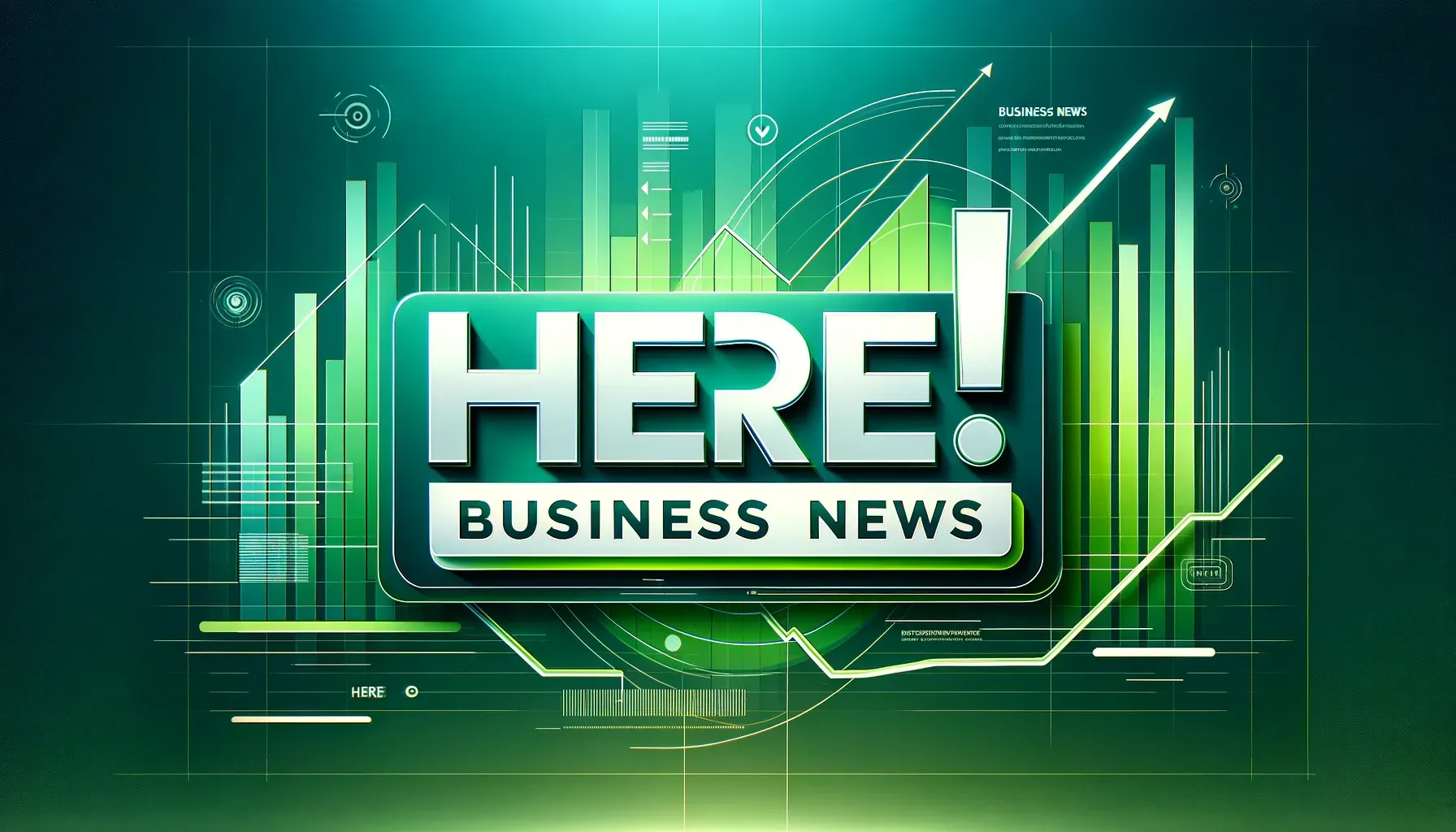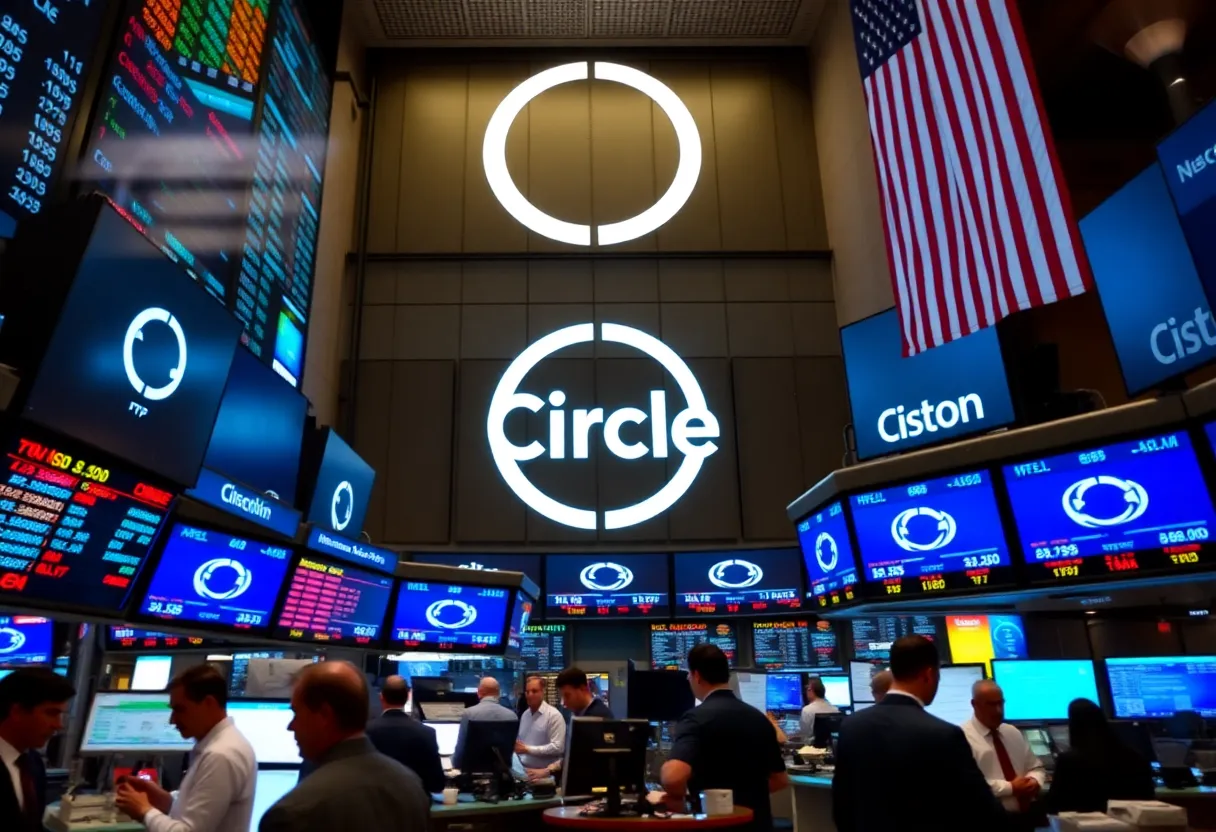News Summary
Circle Internet Group made a strong debut on the New York Stock Exchange, raising nearly $1.1 billion in its IPO. Trading under the symbol CRCL, shares peaked at over $96 before closing at approximately $83.23. Known for its USDC stablecoin, Circle’s IPO stands among the largest public listings for a crypto company since Coinbase went public. The firm anticipates significant revenue growth while navigating regulatory scrutiny in the stablecoin market and competing against established players like Tether.
New York City
Circle Internet Group made a spectacular debut on the New York Stock Exchange (NYSE) on Thursday, raising nearly $1.1 billion in its initial public offering (IPO). Trading under the symbol CRCL, Circle’s IPO was initially priced at $31 per share, surpassing analysts’ expected price range of $27 to $28. The number of shares sold was also increased from 32 million to 34 million to accommodate high demand.
Circle’s stock experienced a remarkable increase on its first trading day, with prices peaking at over $96 before closing at $83.23. This IPO is among the largest public listings for a crypto-related company since Coinbase went public in 2021. Circle, known for issuing USDC, a stablecoin traded at a 1-to-1 ratio for U.S. dollars, and EURC for euros, has rapidly climbed in stature within the crypto market.
Stablecoin Landscape
Circle primarily operates in the stablecoin arena, a sector designed to provide stability against market volatility by pegging cryptocurrencies to real-world assets. Currently, Tether dominates the market with its USDT stablecoin, which boasts approximately $150 billion in circulation, while USDC stands as the second-largest stablecoin with around $60 billion in circulation. Since its launch in 2018, USDC has facilitated over $25 trillion in onchain transactions.
Circle’s revenue has witnessed significant growth, expected to rise from $15 million in 2020 to an anticipated $1.7 billion in 2024. The company’s financial model includes profiting from the interest on assets held in reserve to back its stablecoins—these reserves are primarily comprised of cash, short-dated U.S. Treasuries, and overnight repurchase agreements with leading global banks.
Regulatory Landscape and Competition
Circle’s IPO comes amidst increasing scrutiny from regulators regarding the stablecoin market. A bipartisan Senate bill aimed at regulating stablecoins is currently making its way through the legislative process, highlighting the importance of government relationships for further adoption of stablecoin solutions. Circle’s CEO, Jeremy Allaire, has underscored the necessity of these relationships as vital for mainstream acceptance and expanded market presence.
Competition in the stablecoin sector is heating up, with new entrants trying to carve out their share. A notable entry includes a crypto enterprise partially owned by the Trump family, which has announced the launch of their stablecoin, USD1.
Company Background
Founded in 2013, Circle initially focused on consumer-facing payments and crypto wallet services. The company gained recognition when it became the first to receive a New York State BitLicense in 2015, underscoring its commitment to regulatory compliance in an evolving industry. Earlier this year, the company made the strategic decision to move its headquarters to New York, positioning itself at the heart of financial innovation and regulation.
Circle continues to strive for leadership in the stablecoin space, with ambitions expressed by co-founder Brian Armstrong to establish USDC as the leading stablecoin in a competitive and rapidly changing market.
Deeper Dive: News & Info About This Topic
HERE Resources
Additional Resources
- CNBC
- Wikipedia: Stablecoin
- AP News
- Google Search: Circle IPO
- Forbes
- Google Scholar: Circle stablecoin
- Reuters
- Encyclopedia Britannica: Circle Internet Group
- MarketWatch
- Google News: Circle USDC

Author: STAFF HERE NEW YORK WRITER
The NEW YORK STAFF WRITER represents the experienced team at HERENewYork.com, your go-to source for actionable local news and information in New York, the five boroughs, and beyond. Specializing in "news you can use," we cover essential topics like product reviews for personal and business needs, local business directories, politics, real estate trends, neighborhood insights, and state news affecting the area—with deep expertise drawn from years of dedicated reporting and strong community input, including local press releases and business updates. We deliver top reporting on high-value events such as New York Fashion Week, Macy's Thanksgiving Day Parade, and Tribeca Film Festival. Our coverage extends to key organizations like the Greater New York Chamber of Commerce and United Way of New York, plus leading businesses in finance and media that power the local economy such as JPMorgan Chase, Goldman Sachs, and Bloomberg. As part of the broader HERE network, including HEREBuffalo.com, we provide comprehensive, credible insights into New York's dynamic landscape.





